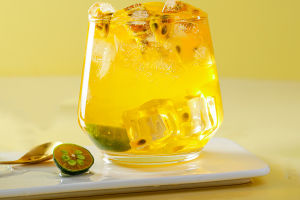Marshmallows
Marshmallows date back to ancient Egypt, where they were made from mucilage extracted from the roots of the Althaea officinalis, or marshmallow plant, which gave them their name.
This perennial herbaceous plant belongs to the Malvaceae family.
The sticky substance was mixed with honey to create candies that were used to relieve sore throats and chest pains.
Ancient Rome and the Middle Ages
Over time, the Greeks, Romans, and other ancient civilizations discovered the medicinal value of marshmallows. Pliny the Elder's writings mention the use of marshmallow mucilage extract as a dressing to speed up wound healing. Medieval physicians also recommended marshmallow preparations for a variety of ailments, such as respiratory and digestive problems.
Transformed into a Dessert
In the 16th century, marshmallows began to be used as an ingredient in delicate French pastries. Pastry chefs mixed the mucilage extract with sugar to create a soft, chewy dough. This dough was then shaped into small forms and coated with rock sugar to prevent sticking. These candies were often consumed during special celebrations and ceremonies, marking the evolution of marshmallows from a medicinal remedy to a delightful treat.
Modern Marshmallows
By the 19th century, the marshmallow recipe had evolved further into the candy we recognize today. By replacing the natural mucilage with a combination of gelatin and vegetable proteins, candy manufacturers were able to mass-produce lighter, fluffier marshmallows. The inclusion of sugar, vanilla, and egg whites improved the taste and texture. This transformation allowed marshmallows to become more widely available and popular.
Toasted Marshmallows: A North American Tradition
Marshmallows became particularly popular in North America in the early 20th century. Producers found new ways to market them, such as roasting marshmallows over campfires. This led to the creation of "s'mores," a sweet sandwich made with marshmallows, chocolate, and graham crackers. As marshmallows grew in popularity, many other varieties and flavors emerged, including fruit, chocolate, and even spices.
Over the centuries, different regions of the world have developed their own recipes based on marshmallow extract. For example, the Near East is famous for halvas, a rich, dense dish made with sugar, honey, sesame seeds, and typically marshmallow extract. The dish can be flavored with various ingredients, including nuts and dried fruits. In Western Europe, jelly candies are another sweet treat made from mucilage extract mixed with sugar, fruity flavorings, and gelatin to create a firm, chewy texture. These sweet treats can be eaten on their own or as part of a dessert platter.
Marshmallows Today: An Evolving World
Today, marshmallows have come a long way from their medicinal origins to become a culinary staple. Modern producers offer a wide range of marshmallows in various flavors, colors, and shapes to appeal to foodies around the world.
Vegetarian and Gluten-Free Options
With growing awareness of allergies and lifestyle choices such as vegetarianism and veganism, marshmallow producers have begun to create alternatives to suit different diets. For example, gluten-free marshmallows are now available for those with gluten intolerance. Similarly, vegetarians can find marshmallows made with plant-based alternatives instead of animal gelatin.


